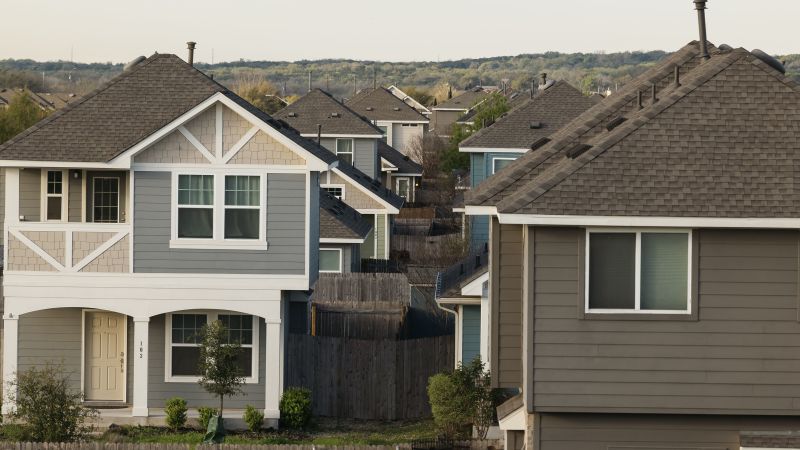Despite elevated mortgage rates in March, sales of newly built single-family homes in the United States soared, jumping 8.8% to a seasonally adjusted annual rate of 693,000. This exceeded economists’ projections and marked the strongest monthly increase since December 2022. Sales of new homes increased across the country, with the Northeast region seeing the largest rise of 27.8% from February. In contrast, sales of existing homes fell 4.3% in March to a seasonally adjusted annual rate of 4.19 million, the sharpest drop in over a year.
Economists predict that the broader US housing market will remain challenging for Americans, with mortgage rates expected to stay above 6% throughout the year. The Federal Reserve’s actions indirectly influence mortgage rates, and the central bank is not anticipated to cut interest rates anytime soon. A persistent undersupply of housing is also contributing to low affordability, making it difficult for homebuyers to find suitable options. Despite improvements in housing inventory in recent months, supply continues to lag behind demand.
Homebuyers are facing limited options in the resale market, as homeowners who secured lower mortgage rates before the Fed began hiking rates are reluctant to sell their homes. Major homebuilders are offering incentives such as price reductions, mortgage rate buy-downs, and paying buyers’ closing costs to support a healthy pace of new home sales. However, the momentum that the housing market started the year with appears to have fizzled out, as existing home sales and residential construction of single-family homes declined in March.
Residential construction of single-family homes fell by 12.4% in March, while building permits for future construction also decreased to a five-month low. Despite this, data from the National Association of Home Builders showed that builder sentiment held steady in April, with a slight decrease in the percentage of builders cutting prices or offering sales incentives. The chief economist at NAHB noted that potential demand growth exists, but buyers are hesitant due to uncertainty about future interest rates. Overall, the housing market continues to face challenges, with limited inventory, high prices, and elevated mortgage rates impacting both buyers and sellers.


